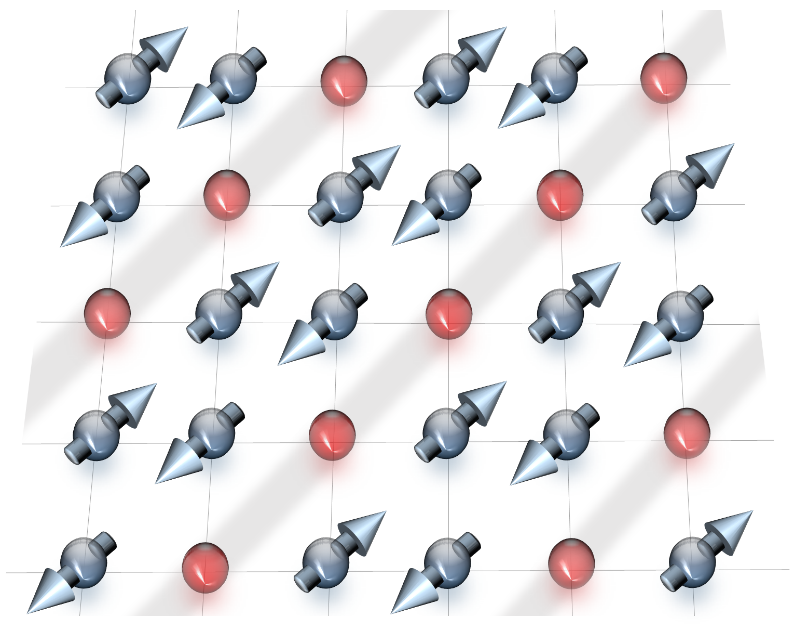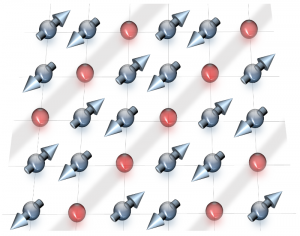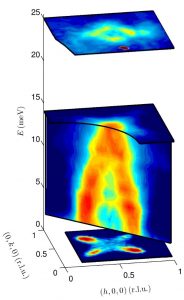
Recent work of a collaboration of Physicists, including UCLan’s Dr. Paul Freeman, has been published in the Nature journal.
Stripe phases are a form of complex matter involving coupled spin and charge order. They are observed in certain copper oxide superconductors, as well as in nickelates and manganites. Some theoreticians believe that stripe fluctuations are important to the mechanism of high temperature superconductivity. A key piece of evidence for the idea is the universal form of the magnetic excitation spectrum of hole-doped copper oxide superconductors as measured by neutron scattering, which is in the shape of an hourglass. Nearly thirty years after the discovery of high temperature superconductivity, understanding this phenomena still poses one of the greatest challenges in condensed mater physics.
In latest experimental findings scientists from the JHI UCLan (P. G. Freeman), the universities EPFL (Lausanne, Switzerland), Oxford and the Institut Laue-Langevin have found significant evidence to support the theory that this type of magnetic excitation spectrum emerges naturally from a stripe-ordered ground state.
In 2011, the researchers observed an insulating layered cobalt oxide La5/3Sr1/3CoO4, has an hourglass shaped magnetic excitation spectrum [A.T. Boothroyd et al., Nature 471, 341 (2011)]. At the time, there was indirect evidence for stripe order in this material, and the result was significant because it provided an experimental demonstration of how an hourglass spectrum could arise from a stripe-ordered ground state. However, direct evidence for the charge-stripe order has been missing until now. The apparent absence of stripes led to an alternative, stripe-free, model to explain the hourglass spectrum based on a nanoscopic phase separated regions of checkerboard and Néel magnetic order [Dress, et al., Nature Communications 5, 5731 (2014)].
In the work published in Nature Communications, the scientists employed polarized neutron diffraction at the IN20 spectrometer at the ILL to detect a signature of charge stripes in La5/3Sr1/3CoO4. The results show that the magnetic ground state is more complicated than initially thought – containing macroscopic regions of spin- and charge-stripe order as well as charge-checkerboard order (resembling a chess board).
However, the measurements reinforce the stripe-model as the underlying mechanism for the hourglass magnetic spectrum in the cobaltates. The present results provide an experimental basis for theories that assume a ground state with static or slowly fluctuating stripes in order to explain the hourglass spectrum in the copper oxide high temperature superconductors.
This work was funded by the European Research Council (CONQUEST) and the Engineering and Physical Sciences Research Council (UK).
Reference: P. Babkevich, P. G. Freeman, M. Enderle, D. Prabhakaran & A. T. Boothroyd. Direct evidence for charge stripes in a layered cobalt oxide. Nature Communications 7:11632, 23 May 2016. DOI:10.1038/ncomms11632
figure: Magnetic structure of the layers of cobalt in charge-stripe ordered La5/3Sr1/3CoO4, showing the charge-stripes (grey diagonal lines) observed in these new research findings.
Right hand figure: The hourglass shaped magnetic excitation spectrum of La5/3Sr1/3CoO4, which closely resembles the hourglass shaped magnetic excitation spectrum of copper based high temperature superconductors.


